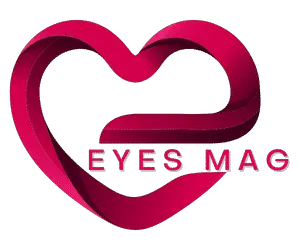What Does It Mean When Someone Looks Down And Smiles
Have you ever been in an environment where someone stared up and smirked at you, leaving you confused about what the smile was referring to? The body language is an exciting and sometimes mysterious way of communicating. When someone turns their head with a smile, that’s a sign that can raise questions about their motives and motives.
In this blog, we’ll dive into the mysterious world of reading body language, precisely what is meant when someone turns their head and smiles. When we look into the intricacies of smiles and the social significance of them as well as their social significance, we’ll gain invaluable insights into the different meanings of non-verbal expression. Let’s begin our adventure to discover the hidden messages behind the smiles and downward glances.
The Complexity Of Smiles

Smiles, which are among the most well-known kinds of non-verbal communication, are far from being simple. They are complicated expressions that can communicate a wide variety of feelings and intentions. Knowing the nuances of smiles is necessary to understand what is meant when someone turns their head and smiles.
- The 3 Broad Categories: To understand the variety of smiles, it’s helpful to group smiles into three broad categories: Smiles that reward, Affiliative smiles, or dominance-oriented smiles. Each one of them has its social purpose.
- Reward smiles result from positive emotions like happiness, satisfaction, or joy: Consider them “feel-good” smiles. Reward smiles create a concert of sensory stimulation, triggering muscles around the cheeks and mouth and in the eye and brow regions. The smiles we receive are motivating for ourselves and those around us.
- An example: Imagine a child unexpectedly smiling at their mother. it stimulates Dopamine release, the chemical that makes you feel good, into the brain of the mother, which reinforces the behavior.
- Affiliation smiles: Affiliation smiles are used to assure, signal trustworthiness as well as signal belonging and show good intentions. They represent smiles that express empathy and social connections. The typical smile is an upward lip pull and can trigger dimpling of cheeks. They may also feature an understated lip pressor where the teeth are concealed or as a reverse of the basic tooth-baring aggressive signal.
- Dominance smiles: Contrary to dominance the dominance smile, it is used to show superiority, convey the displeasure of others, or make them think they are less influential. They may resemble the sneer of a person and possess distinct mechanics. They tend to be symmetrical, where one cheek is raised, while the other is neutral or sways downwards. Dominance smiles can also include a lip curly and raising of the eyebrow to reveal greater amounts of the white area that is visible to the eyes. The facial expressions send strong signals of anger and displeasure.
Understanding the three primary types of smiles can provide an insight into the motives and feelings behind a smile. However, it is crucial to understand that smiles aren’t universally applicable. They are available in many shades and variations, which makes them fascinating and a powerful method of interaction between people. In the subsequent sections, we’ll examine the ways that smiles are displayed in different settings and what they tell us about our thoughts and emotions.
The Rewarding Smile
Reward smiles, like the name implies, are associated with positive emotions and act as motivational tools to both those smiling as well as those who are on the receiving end. Knowing the traits of reward smiles can provide valuable insight about their significance when someone is looking down and smiling.
1. Positive Feelings
Reward smiles usually arise from feelings of happiness, satisfaction or joy even when there is sadness. They convey a feeling of contentment and happiness.
2. Sensory Stimulation
What makes reward smiles distinct is their use of different sensory stimuli. When a person wears an incentive smile, many facial muscles get involved. The muscles in the mouth and cheeks are triggered, and the brows and eyes can also be involved in the expression. The multi-dimensional interaction enhances the sensation of positive emotions and also reinforces the behaviors associated with the smile.
3. An Example
Imagine a scenario in which an infant unexpectedly looks at mommy. This act of kindness creates a chain reaction of happenings. The brain of the mother responds by releasing dopamine, which is a neurotransmitter that can be associated with happiness and reward. In this way, the mother is being rewarded for her child’s apparent happiness, which creates a positive feedback loop.
Recognizing the significance of smiles of reward helps us identify the genuine emotions of happiness. When someone is looking down and reprimands you with smiles, it usually indicates that they are satisfied and happy with their presence.
However, it is important to take into account other cues and the person’s general attitude to comprehend the entire message that is conveyed through this type of body expression. In the next sections, we’ll examine different types of smiles and their implications, shining an understanding of the intricate world that is nonverbal communications.
What Does It Mean When Someone Turns Their Head And Smiles
When someone stares at them and smiles, it could be interpreted as a number of different things, based on the context and body language of the other. Below are a few possible meanings:
- flirting: If someone makes eyes with you, then glancing down and smiling this could be an indication that they’re having a flirt. This is especially true when they’re biting their lips or playfully twirling their hair while they are doing it.
- Shyness: A person that is shy, or unsure could look at you and smile while they speak to you. This is due to the fact that they might not be at ease enough to maintain eye contact for extended lengths of time.
- Embarrassment: If someone squints and smiles after having made a mistake or done something embarrassing, It could be an opportunity to apologize or demonstrate how awkward they are.
- Amusement: A person who is amused by something you’ve said or done might smile and look at you. This is especially true when they’re also laughing or laughing.
- Submission: In certain cultures, the act of looking down is an indication of respect or respect. For instance, a subordinate might look down and smile while they talk with their boss.
It is essential to think about the context as well as other indicators of body language in interpreting someone’s smile. For instance, if someone is smiling down but abstaining from eye contact, this could be an indication that they’re feeling uneasy or nervous. But if they’re smiling and looking down as they make contact with the person in front of them, it’s most likely that it is a good indicator.
Affiliation Smiles

Smiles of affiliation, typically described as caring and comforting nature play an important role in establishing trust and social connections. When someone smiles and smiles at you is a sign of an intention to have positive social interactions. Let’s explore the world of smiles that represent affiliation and discover what they reveal:
1. The Essence of Compassion
Affiliation smiles can be used to provide comfort to others, show trustworthiness as well as convey a sense of belonging, and convey good intentions. They are the symbol of love and desire to connect with people who are around us.
2. Physical Characteristics
One distinctive feature of smiles that are affiliated is the upward incline on the lips. When someone is seen flashing an affiliation-related smile, you’ll usually observe their lips curving upwards, creating an inviting and inviting look. Furthermore, these smiles could result in dimplinging of the cheeks, adding to the appearance of their friendliness.
3. A Subtle Gesture
Affiliation smiles may also incorporate the lip pressor, which is an unintentional variation in which lips stay closed throughout the smile. This could be thought of as a subtle change in the basic tooth-baring signal of aggression, which emphasizes an empathetic and peaceful intent.
Smiles that are associated with friendship are vital to keeping harmonious social connections. If someone is looking down and smiles at you with this kind of smile, it’s a clear sign of their desire to be connected, reassure, and be a positive influence.
They can be especially effective when the trust of others and friendship are crucial, for example, when introducing yourself or when communicating empathy. In the next sections, we’ll examine the specifics of smiles as well as their role in various social situations.
Conclusion
In the complex web of human interactions, smiles are among the most effective and diverse methods for nonverbal communication. The quest to discover what is meant when people smile and look down has revealed the many facets of the expression.
From the gratifying smiles that boost positive emotions to friendly smiles that encourage connections and trust, and the flirtatious smiles that show romance to smirks which show vulnerability, each kind of smile has its own message.
When we analyze these smiles, We gain valuable insights into the people’s moods, motives, and motivations. Understanding the subtleties of smiles can improve our ability to communicate with other people, which can lead to more effective communication and stronger relationships.
Smiles aren’t just expressions of the face; they provide a glimpse into our personal worlds. They reassure, reward as well as elicit an array of emotions without even saying a word.
If someone smiles and looks down at you, You’ll be able to discern the message they’re transmitting. It could be a signal of happiness, a sign of trust, a hint of romanticism, or a glimpse of vulnerability. The language of smiles is a powerful part of the wonderful symphony that is human interactions.


















